|

EMD GP35
Atlantic Coast Line
No.4201 -Powered
No.4221 -Dummy
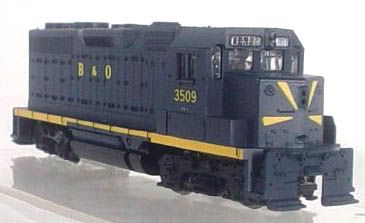
EMD GP35
Baltimore & Ohio
No.4202 -Powered
No.4222 -Dummy
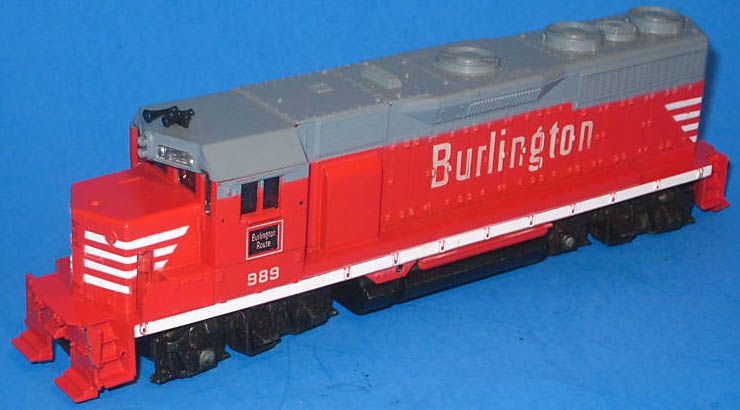
EMD GP35
Burlington
No.4203 -Powered
No.4223 -Dummy
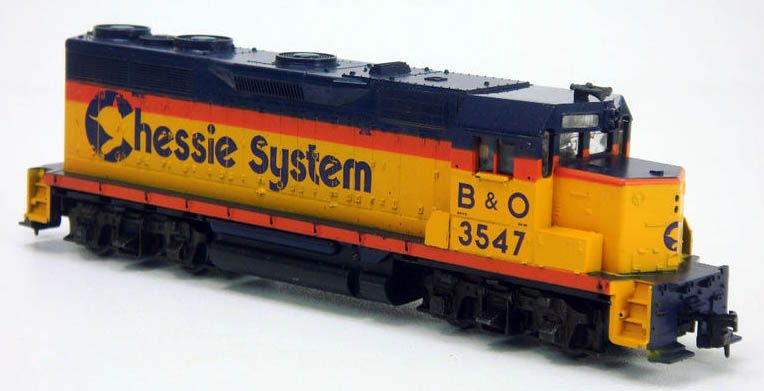
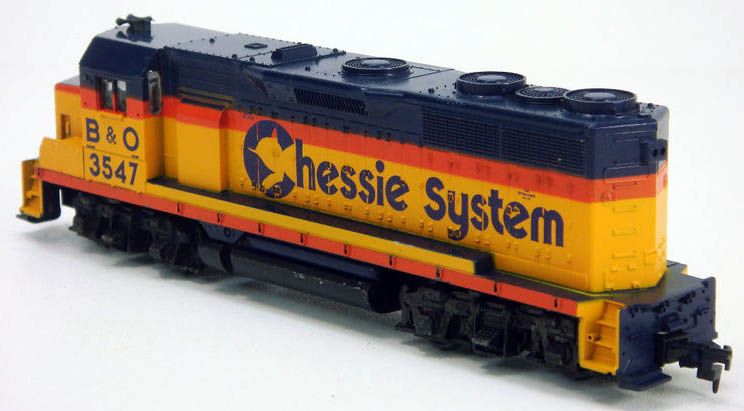
EMD GP35
Chessie System
No.4208 -Powered
No.4228 -Dummy

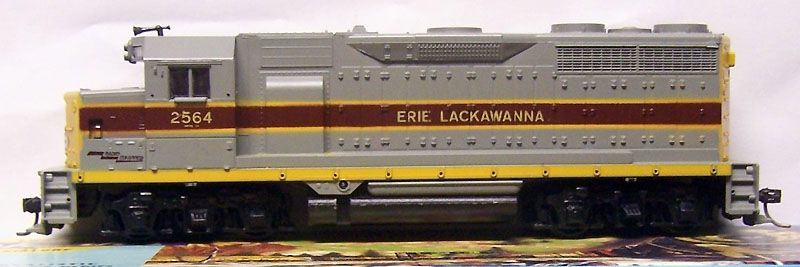
EMD GP35
Erie Lackawanna
No.4207 -Powered 1971 Release
No.4227 -Dummy 1971 Release

EMD GP35
Illinois Central
No. 4204 -Powered
No. 4224 -Dummy
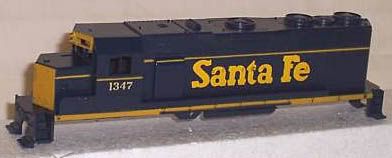
EMD GP35
Santa Fe
No. 4205 -Powered
No. 4225 -Dummy
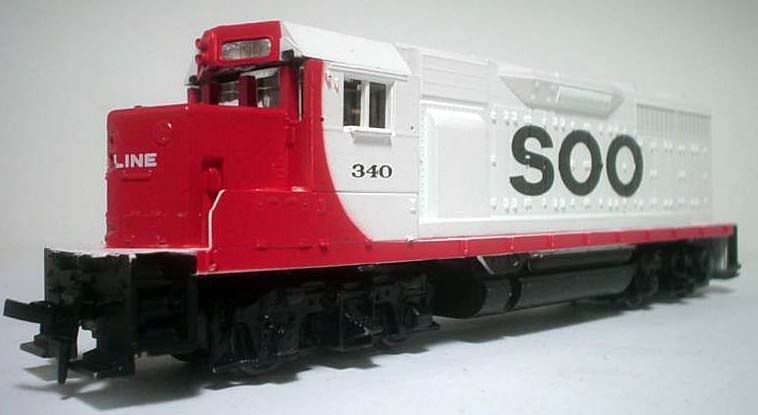
EMD GP35
Soo Line
No. 4209 -Powered
No. 4229 -Dummy

EMD GP35
Southern Pacific
No. 4206 -Powered
No. 4226 -Dummy
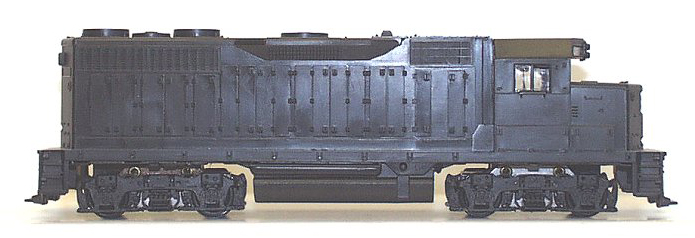
EMD GP35
Undecorated
No.4200 -Powered
No.4220 -Dummy

The ad proclaims, "Athearn introduces another great locomotive" and that they were in the mid
1960s. The GP35 is part of group of EMD prototypes all arriving between 1965 and 1966 to the Athearn line. Originally six
roads were produced for the Athearn GP35: ACL, B&O, CB&Q, Illinois Central in Green Diamond Black, Santa Fe, and SP. The
Erie-Lackawanna GP35 is released in 1971 and the Chessie System GP35 follows not long after the 1972 creation of the merged
B&O-C&O. A Soo Line red and white GP35 arrives in 1979.
EMD had only just wrapped production on the GP35 in early '66, when Athearn had its 1/87th sized example ready. The GP35
was a very popular prototype with over 1,300 examples built by EMD from mid 1963 to the very beginning of 1966. The GP35
went through a number of changes or production phases. The Athearn GP35 issued in '66 represents a Phase Ia example of the
diesel.
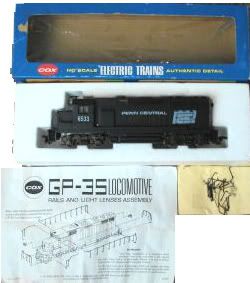 Released just after the era of ready to run examples, the GP35 was offered in kit form only during the classic blue box era.
Beginning in 1971, you could find a fully assembled Athearn GP35 in your choice of Chessie System (6111-4), CB&Q (6111-3),
Penn Central (6111-2) or Southern Pacific (6111-1) as part of the Cox line of HO-scale trains. The Cox GP35 releases match
those found in the Athearn line, except the Penn Central example. As with the Cox Penn Central F7-A, the PC GP35 is a unique
Athearn-made release exclusive to the early '70s Cox offerings.
Released just after the era of ready to run examples, the GP35 was offered in kit form only during the classic blue box era.
Beginning in 1971, you could find a fully assembled Athearn GP35 in your choice of Chessie System (6111-4), CB&Q (6111-3),
Penn Central (6111-2) or Southern Pacific (6111-1) as part of the Cox line of HO-scale trains. The Cox GP35 releases match
those found in the Athearn line, except the Penn Central example. As with the Cox Penn Central F7-A, the PC GP35 is a unique
Athearn-made release exclusive to the early '70s Cox offerings.
With respect to Athearn's blue box era GP35 roadnames and their prototype counterparts, the ACL owned a half dozen GP35s,
but numbered them 909-915. The Athearn ACL GP35 carries number 960. The ACL GP35 was bought without dynamic brakes.
The Baltimore & Ohio GP35 came in solid blue with roadnumber 3509, which matches a prototype roadnumber. The B&O did buy
dynamics, but did not include the nose headlight found on the Athearn model. Same holds true for Athearn's Chessie System
GP35 with roadnumber 3547.
The Burlington example wearing roadnumber 989 is pretty close to the mark. CB&Q did buy both dynamic brakes and had the same
nose headlight as the Athearn model.
The Erie Lackawanna GP35 was one of two additions Athearn added to its GP35 roster, the other being the Chessie System, during
the classic blue box era. The E-L prototype 2570 is a later phase GP35 and doesn't have the nose headlight found on the Athearn
model.
The Illinois Central GP35 wearing number 9432 and the Green Diamond herald has no prototype. The IC was one of the few buyers
of EMD's GP28 and the 9432 number matches a 1964 group of those diesels. The GP35 is similar in appearance to IC's GP28,
but the road rarely bought dynamic brakes and the nose headlight is not typical for this period of IC and neither feature
is present on the GP28.
The blue and yellow as-delivered Santa Fe GP35 includes the 1300-series numbering that lasted until 1972. The Santa Fe prototype
lacks the nose headlight, which also appears to cause the Athearn example to exclude the ATSF herald on its nose.
The Southern Pacific GP35 matches up to a prototype 6539, but the unique SP light package on the nose is naturally not present
on the Athearn model.
|

Athearn included a dual vertically aligned headlight placed just below the top of the nose. This feature doubtless sold many
a tube of putty, as modellers would fill in this unwanted feature. Sanding off the dynamic brake blisters was a common chore
in the classic Athearn blue box era too. Both would be unusual jobs for today's hobbyist.
The Athearn shell design across the GP35-SDP40-SD45 all feature a body with the cab cast as part of the long and short hoods
minus its roof. The angular roof piece that includes the numberboards and headlights was a separate casting. This piece
was universal and interchangable among the GP35-SDP40-SD45. You may see clearly the piece is separate in the pictured Erie-Lackawanna
example. As I recall and the picture illustrates this was a somewhat ill-fitting situation. Look around the tops of the
side oval windows and note the gaps and poor alignment. This is not a poorly assembled example, but the typical look of this
model as it came from the box without modification.
|
Please note that this site was created for use by those with an interest in HO-scale model trains and does not necessarily
represent the current Athearn line available today. The author is not affiliated with,
nor representing Athearn and/or Horizon Hobby in any way.
This site is intended for your enjoyment and information only.
Images and information presented on this site comes from a variety of sources including magazines, internet, catalogs, visitor
input, and the author's collection.
Site Copyright (c) 2013 HO-Scale Trains Resource
|
|
|

